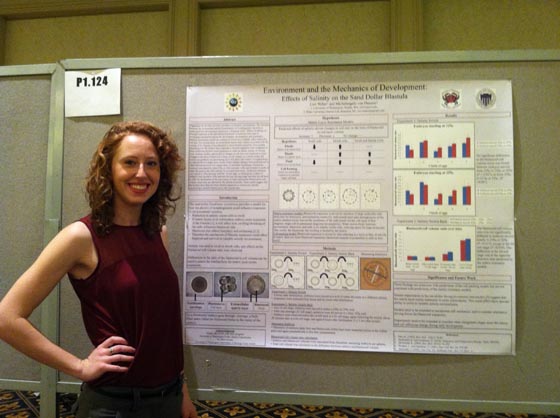Sun, Sand Dollars, and the Huts: My Summer at Friday Harbor Labs
by Ceri Weber
Expected B.S. in Biology at the University of Washington, June 2013
Undergraduate researcher in the Swalla lab
2012 FHL BEACON/BLINKS/NSF REU Intern
I had the wonderful opportunity to do research at Friday Harbor Labs this past summer through the NSF REU program. I had heard a lot about FHL from Dr. Billie Swalla, as well as the graduate students in her lab, but I had never visited the Labs myself. So I was thrilled when I was accepted into the program and I ended up spending the summer studying the effects of salinity on the mechanics of development in the sand dollar Dendraster excentricus with Dr. Michelangelo von Dassow (Mickey).
On my first day at work, Mickey told me to just watch the sand dollar embryos grow. I sat at the microscope for hours, just admiring and drawing what I saw—this was a defining moment of my summer. I had seen embryos in my textbooks and during lectures, but never growing and dividing right in from of me. For the rest of the summer, I spent many hours observing the embryos—taking pictures, measuring embryos, and analyzing my data in order to answer my questions about sand dollar development. If my eyes ever got tired, I would stare out the window of lab 6 and admire the view of the water. This is the magic of Friday Harbor Labs— an opportunity to study biology as it is happening in a beautiful place.
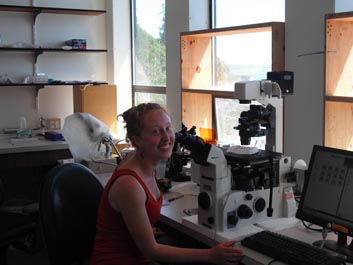
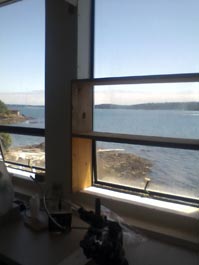
I spent my summer with 20 undergraduates that were also part of the BEACON Blinks NSF REU Internship Program. At first just fellow REU interns, we quickly became a very close and supportive group of friends, affectionately referring to ourselves as the “hut people”. (We lived out in the FHL huts). When not researching, we would explore the island and go on fieldtrips, like whale watching at Lime Kiln, or kayaking, or exploring the intertidal. Even when relaxing at night after a long day at work, we would head down to the docks to admire the bioluminescence or go night lighting. Every day on the island was an adventure and it was made better by a group of students and friends who loved science as much as me.
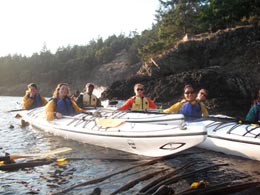
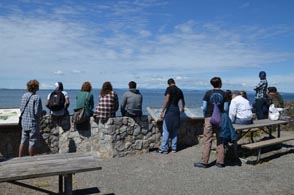
Our mentors and other research scientists at FHL talked to us regularly about what it’s like to be a professional scientist, how to do different kinds of analysis, or how to apply to graduate school and get funding—they were always happy to answer any of our questions. Their goal was to get us excited and prepare us for the world of research and the program did just that! I presented my summer research at the Society for Integrative and Comparative Biology meetings this past January. SICB was also a “REUnion” of sorts, as many of the interns on my program presented their research in San Francisco as well. I was nervous in anticipation of the possible difficult questions and critical feedback I could receive, but in the end my presentation couldn’t have gone better! Everyone who talked to me was interested in having a conversation about my research and had excellent ideas and suggestions of what to do next. The REU experience and SICB have definitely inspired and encouraged me to keep doing research and stay involved in the science community.
